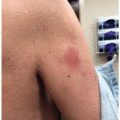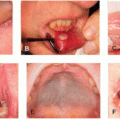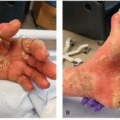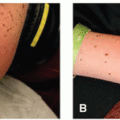Sclerosing Reactions
Jordan Taylor Said
Cecilia Alejandra Larocca
Sclerosing reactions are a rare set of cutaneous toxicities that can be caused by chemotherapy, immunotherapy, and radiotherapy—each with a unique presentation.
Chemotherapy-induced sclerosis may present like limited cutaneous systemic sclerosis (SSc)—with significant diffuse doughy edema (Figure 13.1) with or without erythema, typically affecting the distal extremities, followed by progressive sclerosis (Figure 13.2). Resultant decreased range of motion and contractures may severely limit mobility (Figure 13.3).1,2 Unlike SSc, visceral organs are usually unaffected and patients do not have Raynaud phenomenon; antibodies are usually negative. Overlying pigmentary changes (hyper- and/or hypopigmentation) may be seen in later stages of sclerosis. Skin biopsy demonstrates dermal fibrosis with thickened collagen bundles, often with a lymphohistiocytic cell infiltrate.1 This debilitating toxicity requires permanent discontinuation of offending chemotherapeutic agent and is most notably associated with taxanes.
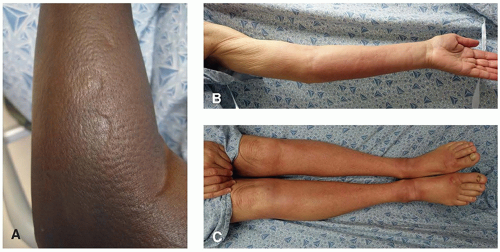 Figure 13.1. Taxane-induced sclerosis of the extremities where doughy edema with pitting, often of both the arms and legs, is generally the presenting sign (A-C).
Stay updated, free articles. Join our Telegram channel
Full access? Get Clinical Tree
 Get Clinical Tree app for offline access
Get Clinical Tree app for offline access

|
